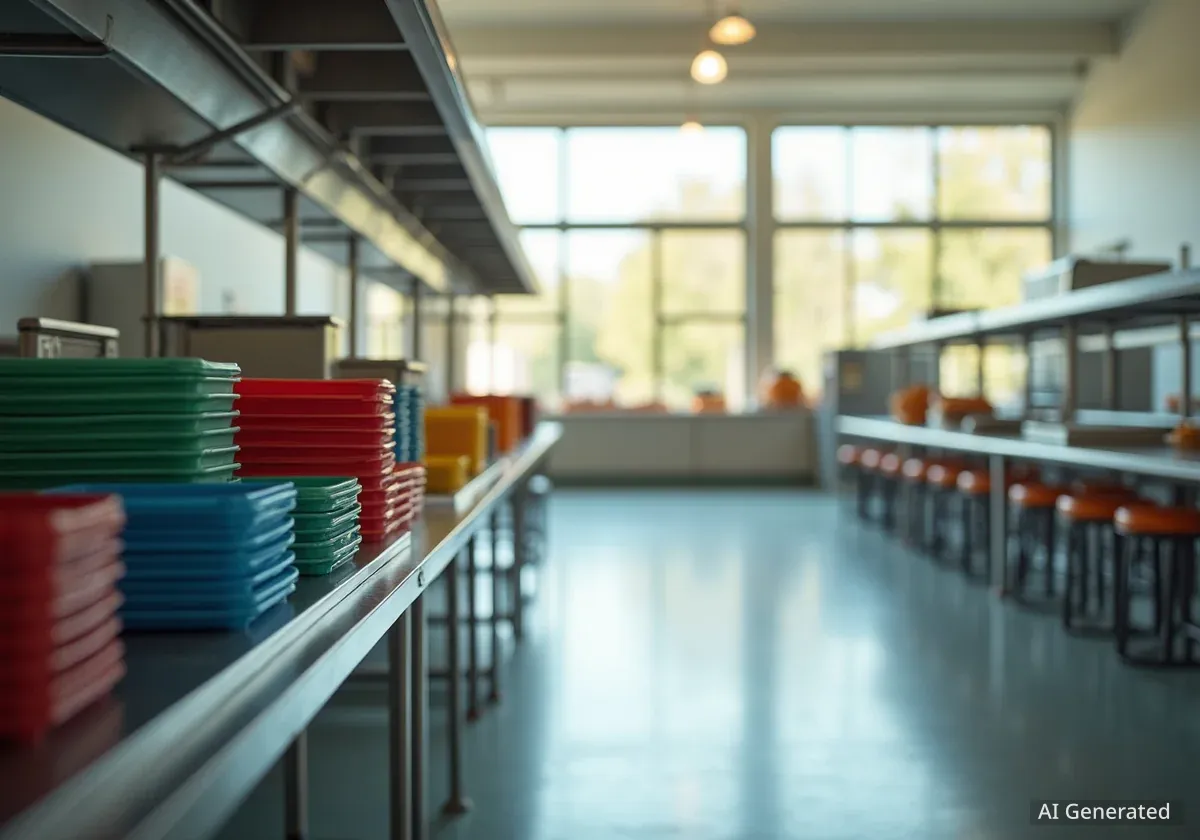A statewide program in Colorado that provides free meals to all public school students is facing a significant funding shortfall, prompting a decision from voters this November. The Healthy School Meals for All program, approved in 2022, has dramatically increased student access to food but its popularity has outpaced its budget, potentially forcing schools to limit eligibility starting in 2026.
Key Takeaways
- Colorado's universal free school meal program, established in 2022, is at risk due to a funding gap.
- Two ballot measures, Propositions MM and LL, will ask voters to approve a tax increase on high-income households to sustain the program.
- School districts report significant increases in meal participation, reducing financial stress on families and improving student engagement.
- Without additional funding, the program will have to revert to income-based eligibility in 2026, limiting access for thousands of students.
Widespread Benefits for Students and Parents
Since its implementation, the Healthy School Meals for All program has become a vital resource for families across Colorado. For parents like Alexandra Sandoval, the program has eliminated the daily stress of affording school lunches for her two children in Rifle.
Sandoval previously relied on a tight budget and food banks, and sometimes her children's school meal accounts would run out unexpectedly. She recalls the distress of seeing another child unable to purchase a meal, a memory that highlights the importance of the universal program.
"It has meant a lot for me," Sandoval said, explaining that the program ensures her children, aged 11 and 16, always have access to breakfast and lunch at school.
This experience is shared by families throughout the state. According to Hunger Free Colorado, an advocacy group, the initiative has enabled approximately 100,000 more students to eat school lunches daily. Nearly every school district in the state participates, with only the Aspen School District opting out.
Districts Report Surging Participation and Academic Gains
School administrators have documented a substantial increase in the number of students eating at school. In the Roaring Fork School District, breakfast participation has risen by about 50%, while lunch participation is up by 40%. Octavio Maese, the district's director of food and nutrition services, noted the program also allows for the purchase of higher-quality food.
"It’s a moment of stability when (students) can show up to a lunchroom and choose to eat food based on their preferences, their likes, rather than a dollar amount," Maese stated.
Participation by the Numbers
In Eagle County School District, the results are even more pronounced. The number of breakfasts served has doubled, and lunches served have increased by 63% since the program began. Nutrition Director Chris DelSordo said it has relieved a significant burden on working families.
Impact Beyond the Cafeteria
The benefits extend into the classroom. Steamboat Montessori, a public charter school, was able to launch its first-ever lunch program thanks to the state funding. Head of School Emily Barnhart said about 80% of the student body, or 110 students, now participates daily.
Barnhart noted a significant academic improvement at the school during the same period, with performance ratings jumping 15 percentage points. While not solely attributable to the meals, she believes it has been a major contributing factor.
"A well-fed child is a ready learner," Barnhart said. "They’re just more alert, and they have energy throughout the entire day."
Parents at the school also reported feeling less financial pressure and having more time to spend with their children, as they no longer need to plan and pack daily lunches.
A Critical Decision for Voters
The program's success has created its primary challenge: a budget insufficient to meet the high demand. To address this, state lawmakers have placed two measures on the November ballot, Propositions MM and LL. If approved, these measures would secure the program's future by:
- Raising income taxes on households earning more than $300,000 per year.
- Allowing the state to retain revenue that exceeds the constitutional cap for program funding.
Proponents argue that passing both is essential not only for continuing universal free meals but also for fulfilling other goals of the original initiative. These include increasing wages for cafeteria staff and providing grants for schools to buy food from local Colorado producers, both of which have been delayed by the funding shortage.
Opposition and Economic Concerns
The proposed tax increases have faced opposition. Critics, including many Republican lawmakers and the free-market think tank Common Sense Institute, argue that the program should operate within its existing budget. They express concerns about the economic impact of higher taxes and increased government spending.
If the ballot measures fail, the program will be forced to revert to a system based on income eligibility in 2026. This would mean many families who currently benefit would once again have to pay for meals, and schools would have to manage the administrative burden of applications and tracking student accounts.
Addressing Broader Food Insecurity
Advocates for the program emphasize that the need for food assistance is growing. In 2023, Colorado reported a 10-year high in food insecurity, and local food banks are struggling with increased demand. Furthermore, upcoming federal changes are expected to tighten eligibility for the Supplemental Nutrition Assistance Program (SNAP), potentially leaving more families in need.
The proposed ballot measures also include provisions to use some of the new revenue to help offset these anticipated SNAP cuts, which are scheduled for 2027.
For parents like Sandoval, who volunteers at a food bank she also relies on, the issue is deeply personal. She worries that returning to an income-based system could create stigma for students who need assistance.
"There’s a lot of stigma with trying to get assistance," she said, recalling the child who was too proud to accept her offer to buy his meal. The universal program, she believes, removes that barrier and ensures every child is treated equally at lunchtime.





